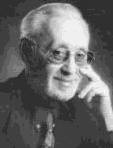|
<< -- 3 -- Malcolm Miller St Petersburg Revelations

A more abstract, even experimental eclecticism coloured the Music
for String Quartet and percussion by Vladimir Uspensky, a five-movement
work that, according to the composer (in interview) marked a decisive turning
point in his development. It epitomised a trend towards a balance of formalist
leanings and neo classical allusion to Russian tradition, symbolised by
the use of fugue, or symmetry, and contrast, of ironic waltz, improvisation
and finally, Russian church music. The work was much admired by Dmitry Shostakovich,
with whom Uspensky studied in the early 60s, and following its première
in 1968 by the Leningrad SO String Quartet he arranged it for string orchestra.

The 'Prelude' features a confrontation between brittle rhythmic
gestures in timpani and side drum, and icy, alternating string chords, the
dialogue impregnated by silence, and, towards its end, interrupted by the
metallic glissando of the inside of a piano, here played by the composer.
The rhythmic ideas coalesce into short motivic fragments in the ensuing
'Fughetta', in which the xylophone doubles the terse subject within
the string polyphony. Yet the fugue functions semiotically as an allusion
to the past, cast aside by the piano's resonant clash, which then introduces
the Intermezzo. This is a wistful waltz, its airy textures balanced between
innocent charm and irony, that gives way to a central impassioned outpouring
that almost reaches, but pulls back from its mood of profound yearning,
still in search of an 'authentic' idiom. The bristling 'Toccata'
that follows combines xylophone with strings in a colourful sequence that
explodes, as in a motorway pile-up, in an improvisatory cataclysm, a highpoint
of anxious, brutal passion. Here one sensed a move from detachment to engagement,
and the allusion to Russian church music in the smooth and sweet string
harmonies of the final 'Postlude' gained an expressive conviction
reminiscent of Schnittke's polystylism. The 'Postlude' also
seemed the expressive climax, in the arresting 'cadenza' for piano
-- high and low extremes, note and chords, resonantly dissonant, which
set off the strings' allusion to Russian church music (Uspensky has
composed much Liturgical Music, having been a chorister in his early childhood)
all the more. The work concludes, palindromically, with the initial drum,
strings dichotomy of the very opening.
Continue >>
Copyright © 23 December 2001
Malcolm Miller, London, UK
 MUSICA NOVA PRODUCTIONS
<< Music
& Vision home
Rodelinda >>
MUSICA NOVA PRODUCTIONS
<< Music
& Vision home
Rodelinda >>
|

